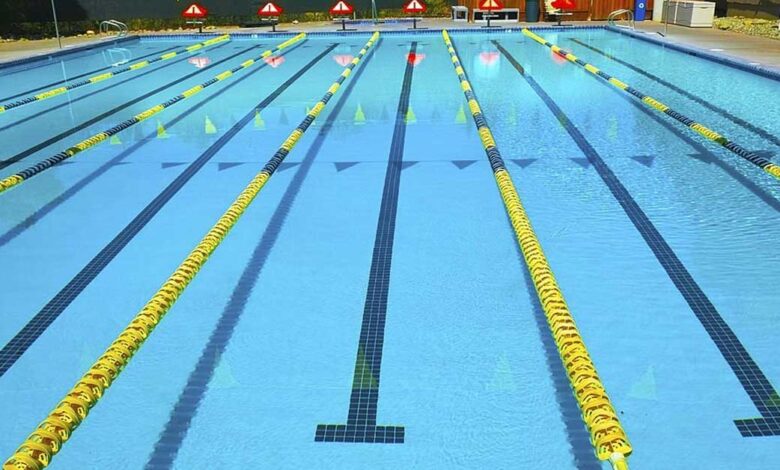How to Plan and Budget for a New Swimming Pool

Building a new swimming pool is an exciting project that can enhance your home’s value and provide countless hours of enjoyment. However, it requires careful planning and budgeting to ensure a smooth and successful installation. Here’s a comprehensive guide on how to plan and budget for a new swimming pool. For more information check out pool builders dubai
- Define Your Objectives
Before diving into the details, it’s essential to clearly define what you want from your new pool. Consider the following questions:
- Purpose: Will it be primarily for exercise, relaxation, or entertaining guests?
- Style: Do you prefer a classic rectangular pool, a freeform design, or a natural swimming pool?
- Features: What additional features are you interested in, such as a spa, waterfall, or lighting?
Tip: Create a list of must-have features and nice-to-have extras to help guide your decisions.
- Research Pool Types
There are several types of pools to consider, each with its own benefits and costs:
- In-Ground Pools: These are built into the ground and come in three primary types—concrete, fiberglass, and vinyl liner. Concrete pools offer customization but are more expensive. Fiberglass pools are quicker to install and lower maintenance but come with limited design options. Vinyl liner pools are cost-effective but require liner replacement every 7-15 years.
- Above-Ground Pools: These are more affordable and easier to install. They can be a good option for a temporary or less permanent solution.
Tip: Consider the pros and cons of each pool type in relation to your budget, maintenance preferences, and desired aesthetics.
- Create a Budget
Setting a realistic budget is crucial for a successful pool project. Your budget should include the following components:
- Design and Installation Costs: This includes the pool construction, excavation, and installation. Costs vary based on pool size, type, and complexity of the design.
- Additional Features: Costs for features such as heaters, covers, lighting, waterfalls, or decking should be factored in.
- Permits and Regulations: Check local regulations and permit requirements. Fees for permits can vary based on location and pool size.
- Landscaping: Consider the cost of landscaping around the pool, including plants, patio furniture, and fencing.
- Maintenance Costs: Plan for ongoing maintenance, including chemicals, cleaning supplies, and utility costs for heating and filtration.
Tip: Add a contingency of 10-15% to your budget for unexpected expenses or changes.
- Choose a Reliable Pool Contractor
Selecting a reputable pool contractor is key to a successful project. Research local contractors and ask for recommendations from friends or neighbors. Consider the following when choosing a contractor:
- Experience and Reputation: Look for contractors with a solid track record and positive customer reviews.
- Licensing and Insurance: Ensure the contractor is licensed and carries liability insurance.
- Portfolio and References: Review their past work and ask for references to gauge their reliability and quality.
Tip: Obtain multiple quotes and compare them to ensure you get a fair price. Be wary of unusually low bids, which could indicate subpar work or hidden costs.
- Design Your Pool
Work with your contractor or a pool designer to finalize the pool design. This involves:
- Site Assessment: Assessing your property’s layout, soil type, and drainage to determine the best pool placement.
- Design Plans: Creating detailed design plans, including pool dimensions, shape, and additional features.
- Material Selection: Choosing materials for the pool shell, coping, and decking. Options include concrete, stone, tile, and pavers.
Tip: Consider how the pool design will integrate with your existing landscape and home architecture.
- Plan for Construction
Once the design and budget are finalized, your contractor will begin construction. This phase includes:
- Excavation: Digging and preparing the site for the pool.
- Installation: Installing the pool shell, plumbing, and electrical systems.
- Finishing Touches: Adding the final features, such as decking, landscaping, and any additional amenities.
Tip: Stay in regular communication with your contractor to monitor progress and address any issues promptly.
- Prepare for Pool Maintenance
After the pool is installed, you’ll need to plan for ongoing maintenance:
- Routine Cleaning: Regularly clean the pool and check for debris.
- Chemical Balancing: Test and adjust chemical levels to maintain water quality.
- Equipment Maintenance: Regularly inspect and maintain pool equipment, such as filters and pumps.
Tip: Consider enrolling in a pool maintenance program if you prefer to leave routine maintenance to professionals.
Conclusion
Planning and budgeting for a new swimming pool requires careful consideration and organization. By defining your objectives, researching pool types, setting a realistic budget, choosing a reliable contractor, designing your pool thoughtfully, and planning for maintenance, you can ensure a successful and enjoyable pool installation. With the right approach, your new pool will become a cherished addition to your home, providing years of enjoyment and relaxation.





